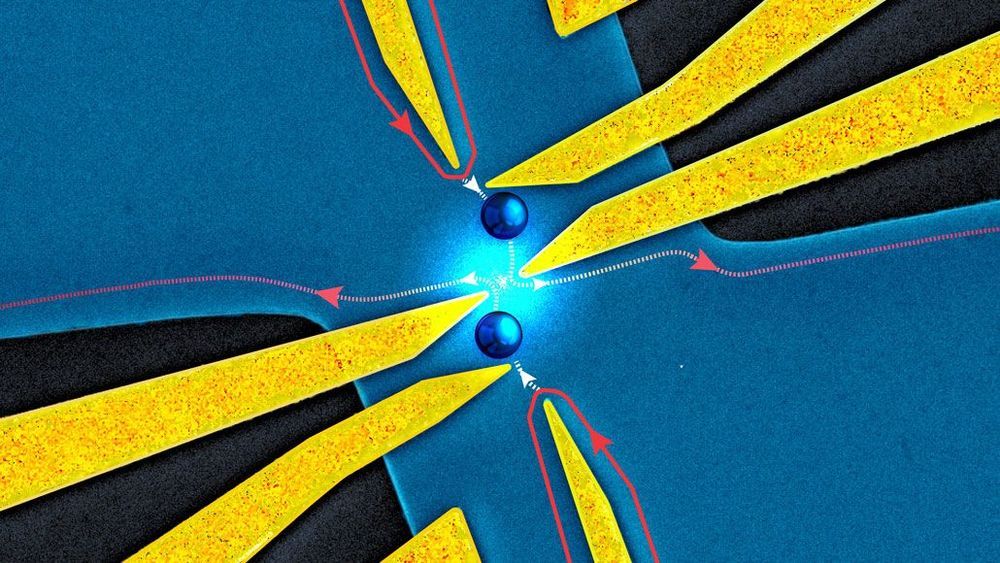The Pentagon’s new program, Ground X-Vehicle Technologies (GXV-T), calls for a rugged but nimble war machine that can detect and dodge incoming fire.
Get the latest international news and world events from around the world.

US4663932A — Dipolar force field propulsion system
A dipolar force field propulsion system having a alternating electric field source for producing electromotive lines of force which in a first direction and which vary at a selected and having an electric field of a predetermined magnitude, a source of an alternating magnetic field having magnetic lines of force which in a second direction which is at a predetermined angle to the first direction of the electromotive lines of force and which cross and intercept the electromotive line of force at a predetermined location defining a force field region and wherein the of the alternating magnetic field substantially equal to the of the alternating electric field and at a selected in phase angle therewith and wherein the magnetic field has a flux which when multiplied times the selected is less than a known characteristic field ionization limit; a source of neutral particles of matter having a selected dipole characteristic and having a known characteristic field ionization limit which is greater than the magnitude of the electric field and wherein the dipoles of the particles of matter are capable of being driven into cyclic rotation at the selected by the electric field to produce a reactive thrust, a vaporizing stage which vaporizes said particles of matter into a gaseous state at a selected temperature, and a transporting system for transporting the vaporized particles of matter into the force field defined by the crossing electromotive lines of force and the magnetic lines of force.

Trapped ytterbium ions could form backbone of a quantum internet, say researchers
Ions trapped nanoscale optical cavities could be used to distribute entangled quantum particles over large distances. That is the conclusion of Jonathan Kindem and colleagues at Caltech in the US, who showed that a trapped ion of ytterbium can remain entangled with a photon for long periods of time. Furthermore, the team showed that the ion’s quantum state can be read out when manipulated by laser and microwave pulses. Their achievement could lay the foundations for a future quantum internet.
Quantum computers are becoming a reality as research labs and companies roll out nascent devices. An important next step in this quantum revolution is creating a “quantum internet” across which quantum information can be shared. The delicate nature of quantum information, however, means that it is very difficult to connect quantum computers over long distances.
Most quantum computers encode quantum bits (qubits) of information into the quantum states of matter – trapped atoms or superconducting circuits, for example. However, the best way to transmit quantum information over long distances is to encode it into a photon of light. An important challenge is how to transfer quantum information from stationary matter-based qubits to photon-based “flying” qubits and then back again.


ID2020 and partners launch program to provide digital ID with vaccines
Step two of…
(Meanwhile in Bangladesh)
The ID2020 Alliance has launched a new digital identity program at its annual summit in New York, in collaboration with the Government of Bangladesh, vaccine alliance Gavi, and new partners in government, academia, and humanitarian relief.
The program to leverage immunization as an opportunity to establish digital identity was unveiled by ID2020 in partnership with the Bangladesh Government’s Access to Information (a2i) Program, the Directorate General of Health Services, and Gavi, according to the announcement.

Shelter in Place with Shane Smith & Edward Snowden (Full Episode)
Shane chats with former NSA spy and whistleblower Edward Snowden on the rise of authoritarianism during the COVID-19 pandemic.
About VICE:
The Definitive Guide To Enlightening Information. From every corner of the planet, our immersive, caustic, ground-breaking and often bizarre stories have changed the way people think about culture, crime, art, parties, fashion, protest, the internet and other subjects that don’t even have names yet. Browse the growing library and discover corners of the world you never knew existed. Welcome to VICE.
Connect with VICE:
Check out our full video catalog: http://bit.ly/VICE-Videos
Videos, daily editorial and more: http://vice.com
More videos from the VICE network: https://www.fb.com/vicevideo
Like VICE on Facebook: http://fb.com/vice
Follow VICE on Twitter: http://twitter.com/vice
Follow us on Instagram: http://instagram.com/vice
The VICE YouTube Network:
VICE: https://www.youtube.com/VICE
MUNCHIES: https://www.youtube.com/MUNCHIES
VICE News: https://www.youtube.com/VICENews
VICELAND: https://www.youtube.com/VICELANDTV
Broadly: https://www.youtube.com/Broadly
Noisey: https://www.youtube.com/Noisey
Motherboard: https://www.youtube.com/MotherboardTV
VICE Sports: https://www.youtube.com/NOC
i-D: https://www.youtube.com/iDmagazine
Waypoint: https://www.youtube.com/Waypoint

Scientists digitally reconstruct skulls of dinosaurs in fossilised eggs
The fossilised skulls of dinosaur embryos that died within their eggs about 200m years ago, have been digitally reconstructed by scientists, shedding new light on the animals’ development, and how close they were to hatching.
The rare clutch of seven eggs, some of which contain embryos, was discovered in South Africa in 1976, with the developing young found to be a species of dinosaur called Massospondylus carinatus.
The plant-eaters were ancestors of sauropod dinosaurs like diplodocus and, as fully-grown adults, would have walked on two legs, measured about five metres from nose to tail, and had long necks with small heads.

Collisions reveal new evidence of ‘anyon’ quasiparticles’ existence
Sometimes, two dimensions are better than three.
In the three-dimensional world we live in, there are two classes of elementary particles: bosons and fermions. But in two dimensions, theoretical physicists predict, there’s another option: anyons. Now, scientists report new evidence that anyons exist and that they behave unlike any known particle. Using a tiny “collider,” researchers flung presumed anyons at one another to help confirm their identities, physicists report in the April 10 Science.
All known elementary particles can be classified either fermions or bosons. Electrons, for example, are fermions. Bosons include photons, which are particles of light, and the famed Higgs boson, which explains how particles get mass (SN: 7/4/12). The two classes behave differently: Fermions are loners and avoid one another, while bosons can clump together.